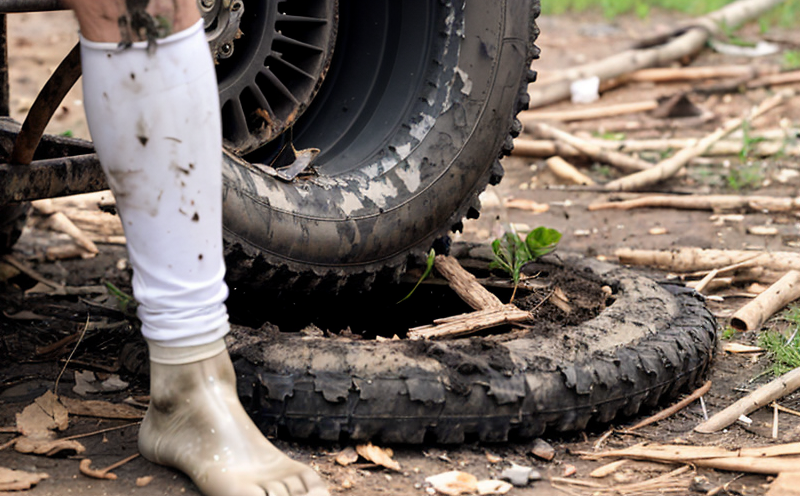ISO 11507 Exposure of Polymers to Environmental Conditions
The ISO 11507 standard specifies a laboratory test method for determining the effects of environmental exposure on polymers. This testing is crucial in ensuring that materials used in building and infrastructure applications maintain their structural integrity, durability, and performance over time. The standard aims to simulate real-world conditions, providing insights into how polymers will behave under natural weathering.
The process involves exposing polymer samples to controlled environmental factors such as ultraviolet light (UV), humidity, temperature variations, and atmospheric pollutants. By replicating these elements in a laboratory setting, ISO 11507 helps identify potential weaknesses or strengths of the materials used in construction projects. This information is vital for product development, quality assurance, and regulatory compliance.
For quality managers and compliance officers, understanding the implications of environmental exposure on polymers can lead to more informed decisions regarding material selection and design. R&D engineers benefit from this testing as they can optimize polymer formulations to withstand harsh conditions. Procurement teams also find value in this service since it ensures that suppliers deliver materials capable of meeting durability requirements.
The test method requires careful preparation of specimens, which are then exposed under specific environmental conditions for a predetermined period. After exposure, the samples undergo detailed evaluation using various techniques such as tensile testing, impact resistance assessment, and visual inspection. These evaluations help determine changes in physical properties due to environmental factors.
Understanding the standard's requirements is essential for any organization involved with polymers or composite materials used in building and infrastructure projects. Compliance with ISO 11507 not only ensures product quality but also supports sustainable practices by promoting the use of environmentally friendly materials.
The following table summarizes key aspects of the ISO 11507 standard:
| Aspect | Description |
|---|---|
| Environmental Factors | Involves exposure to UV light, humidity, temperature changes, and atmospheric pollutants. |
| Sample Preparation | Requires cutting of specimens into standard sizes for consistent testing. |
| Testing Duration | Prolonged periods are necessary to accurately reflect long-term effects on polymers. |
| Evaluation Methods | Includes physical and mechanical property assessments post-exposure. |
The test results provide valuable data for understanding how different environmental conditions impact polymer performance. This knowledge is critical when selecting materials for outdoor applications such as roofing membranes, insulation boards, and exterior cladding.
Applied Standards
The ISO 11507 standard has been widely adopted globally to ensure consistent testing methods across various industries. It aligns with other international standards like ASTM D5294 (United States) and EN 16308 (European Union), providing a harmonized approach to evaluating polymer durability in environmental conditions.
Here are the key applied standards:
- ISO 11507: Environmental exposure of polymers
- ASTM D5294: Weathering of plastic materials
- EN 16308: Exposure of plastics to environmental conditions
The adoption of these standards ensures that testing results are comparable internationally, facilitating trade and collaboration between different regions. Compliance with ISO 11507 also enhances the credibility of products within competitive markets, making it easier for companies to meet regulatory requirements.
Industry Applications
The application of ISO 11507 is broad across multiple sectors, particularly in building and infrastructure testing. Here are some key areas:
- Roofing Materials: Ensuring that roofing membranes maintain their integrity and waterproof properties under varying environmental conditions.
- Insulation Boards: Evaluating the effectiveness of insulation boards in resisting degradation caused by UV radiation and moisture.
- Exterior Cladding: Assessing the durability of cladding materials used on facades to withstand weathering and aging processes.
- Composite Structures: Testing composite materials for civil engineering projects such as bridges, roads, and tunnels.
The test results from ISO 11507 play a crucial role in the development of sustainable building practices by promoting the use of environmentally friendly polymers. They also contribute to enhancing product safety and reliability, which is essential for maintaining public confidence in construction materials.
Customer Impact and Satisfaction
The implementation of ISO 11507 brings several benefits to customers:
- Enhanced Material Quality: By simulating real-world conditions, the test ensures that polymers meet stringent quality standards.
- Informed Decision-Making: Provides valuable insights into potential long-term performance issues, enabling informed choices during material selection.
- Regulatory Compliance: Ensures that products comply with international regulations and standards, simplifying market entry processes.
- Sustainable Practices: Supports the adoption of environmentally friendly polymers, contributing to a more sustainable built environment.
In terms of customer satisfaction, consistent test results from ISO 11507 contribute positively. Organizations that adhere to these standards often report higher levels of trust and loyalty among their customers, which can translate into increased business opportunities and market share.





